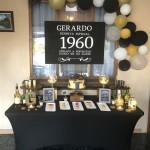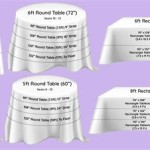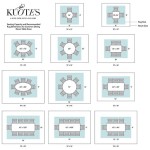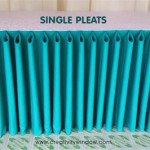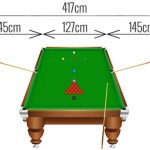Table Lamps with Glass Shades: Illuminating Function and Style
Table lamps serve as vital components of interior lighting schemes, providing both functional illumination and aesthetic enhancement to various spaces. Among the diverse range of table lamp designs, those featuring glass shades hold a prominent position due to their ability to diffuse light effectively while adding a touch of elegance. The following explores the characteristics, benefits, and considerations associated with table lamps incorporating glass shades, emphasizing their role in interior design and lighting applications.
The construction of a table lamp with a glass shade typically involves several key components. The base, often crafted from materials like metal, wood, or ceramic, provides stability and contributes to the overall aesthetic. The lamp's internal wiring and bulb socket are housed within the base and the central stem or body. The lamp shade, the defining feature, is made of glass and is designed to encircle the light bulb. This shade is positioned to diffuse and soften the light emitted, creating a more comfortable and visually appealing ambience. The electrical cord connects the lamp to a power source, and a switch, located on the base, cord, or socket, controls the lamp's on/off function.
Key Point 1: Light Diffusion and Quality
One of the primary advantages of using a glass shade in a table lamp relates directly to the quality and diffusion of light it provides. Glass, unlike opaque materials, allows light to pass through, scattering it evenly and reducing harsh shadows. The specific type of glass used can significantly influence the resulting light quality. For instance, frosted glass creates a softer, more diffused glow, minimizing glare and providing ambient lighting. Clear glass, on the other hand, allows for brighter, more direct illumination, making it suitable for task lighting.
The thickness and opacity of the glass further contribute to the diffusion effect. Thicker glass tends to diffuse light more effectively than thinner glass. Similarly, more opaque glass will create a softer, ambient light, while clearer glass will allow for a brighter, more focused beam. The choice of glass should therefore align with the intended purpose of the lamp and the desired lighting effect. For reading nooks or bedside tables, frosted or lightly tinted glass shades are often preferred for their gentle illumination. For desks or workspaces requiring focused light, clear or lightly textured glass may prove more suitable.
Beyond the visual comfort, diffused light also reduces eye strain. Direct, unshielded light sources can create glare and cause discomfort, particularly during prolonged periods of reading or computer work. A glass shade effectively mitigates these issues by dispersing the light and minimizing harsh contrasts. This makes table lamps with glass shades a practical choice for spaces where visual comfort is a priority.
Moreover, the color of the glass can subtly influence the perceived color temperature of the light. Amber or warmer-toned glass can create a cozy and inviting atmosphere, while lighter or cooler-toned glass can produce a brighter, more energizing effect. This adds another layer of customization, allowing users to tailor the lighting to the specific mood and function of the room. Therefore, careful consideration of the light diffusion and quality becomes essential while choosing a table lamp with a glass shade.
Key Point 2: Aesthetic Versatility and Design Integration
Table lamps with glass shades offer considerable aesthetic versatility, allowing them to seamlessly integrate into a wide range of interior design styles. The diverse range of glass types, shapes, and finishes available enables designers and homeowners to find a lamp that complements their existing décor. From sleek and modern designs featuring clean lines and minimalist shapes to more ornate and traditional styles with intricate detailing, the options are extensive.
Colored glass shades can add a pop of color and personality to a room. Shades featuring subtle tints, such as blues, greens, or ambers, can create a calming and inviting atmosphere. More vibrant colors, such as reds or oranges, can add a bold statement and focal point. The use of patterned or textured glass can also enhance the visual interest of the lamp, adding depth and dimension to the overall design.
The style of the lamp base also plays a significant role in its aesthetic appeal. Metal bases, particularly those with brushed finishes, offer a contemporary and minimalist look. Wooden bases can add warmth and natural texture to a space, while ceramic bases provide a classic and elegant touch. The combination of the glass shade and the base creates a cohesive design that reflects the overall style of the room.
Furthermore, the size and proportions of the lamp are crucial for achieving a balanced and harmonious look. A lamp that is too large or too small for the space can appear awkward or out of place. Careful consideration should be given to the size of the table or surface on which the lamp will be placed, as well as the overall scale of the room. Properly sized lamps can enhance the aesthetics of a room, providing a functional and visually appealing addition to the space.
The aesthetic versatility extends to the lamp's ability to complement various furniture styles. A glass shade table lamp can enhance the look of vintage furniture as easily as that of modern pieces. It is because of the inherent design flexibility that glass shade table lamps can blend into diverse aesthetic surroundings.
Key Point 3: Practical Considerations and Maintenance
While the aesthetic and lighting benefits of table lamps with glass shades are considerable, certain practical considerations should be taken into account. The fragility of glass is a primary concern. Glass shades are susceptible to breakage if mishandled or subjected to impact. Therefore, careful handling and placement are essential to prevent damage. Choosing a lamp with a sturdy base can also help to minimize the risk of tipping or accidental falls.
Cleaning and maintenance are also important factors to consider. Glass shades can accumulate dust and fingerprints, which can diminish their appearance and reduce their light output. Regular cleaning with a soft cloth and a mild glass cleaner is recommended to keep the shade looking its best. Avoid using abrasive cleaners or harsh chemicals, as these can damage the glass surface. When cleaning, ensure the lamp is switched off and unplugged from the power source.
The type of light bulb used in the lamp can also impact its performance and longevity. LED bulbs are a popular choice due to their energy efficiency and long lifespan. They also produce less heat than traditional incandescent bulbs, which can help to prevent the glass shade from overheating. Ensure that the bulb is compatible with the lamp's socket and wattage rating to avoid electrical hazards. Consider the color temperature of the bulb as well, as this can affect the overall ambience of the room. Warmer color temperatures (e.g., 2700K) create a cozy and inviting atmosphere, while cooler color temperatures (e.g., 5000K) provide a brighter and more energizing light.
In situations where the glass shade needs replacement, it is important to find a compatible replacement part. Check the lamp's manufacturer's specifications or consult with a lighting specialist to ensure that the new shade is the correct size and shape. Incorrectly sized shades can affect the lamp's stability and light distribution. A correct fit contributes to both functionality and safety.
Finally, consider the location of the power outlet when placing the table lamp. Avoid placing the lamp in areas where the electrical cord could be a tripping hazard or where it could be easily damaged. Using a surge protector can also help to protect the lamp from power surges and voltage fluctuations, prolonging its lifespan.
In conclusion, table lamps with glass shades represent a fusion of functional lighting and aesthetic design. Their capacity to diffuse light effectively, coupled with the wide array of available styles, makes them a desirable option for a multitude of interior spaces. By carefully considering factors such as light quality, aesthetic integration, and practical maintenance, individuals can select a table lamp that not only illuminates their surroundings but also elevates the overall ambiance of the room.

Glass Shade Edison Bulb Table Lamp Brass

Newburgh Table Lamp Broe Metal With Clear Glass Shade A Touch Of Design

Small Edwardian Or Regency Table Lamp Desk Light In Antique Brass

Buy Kansa Stratton Chrome Table Lamp Lighting

Petite Table Lamp With Opal Lined Glass Shade In Either Light Wood Or Black Metal

Altadena Glass Shade Table Lamp Rejuvenation

Amora Lighting 14 5 In Green And Blue Table Lamp With Stained Glass Shade Am354tl08 The Home Depot

Vintage Hardware Lighting Art Deco Table Lamps Katherine Series With Leaded Glass Shades 577 Ltl Fp

19 Marbel Table Lamp With Marble Base Glass Shade White Globe Electric Target

Glass Shade Edison Bulb Table Lamp Broe Desk

